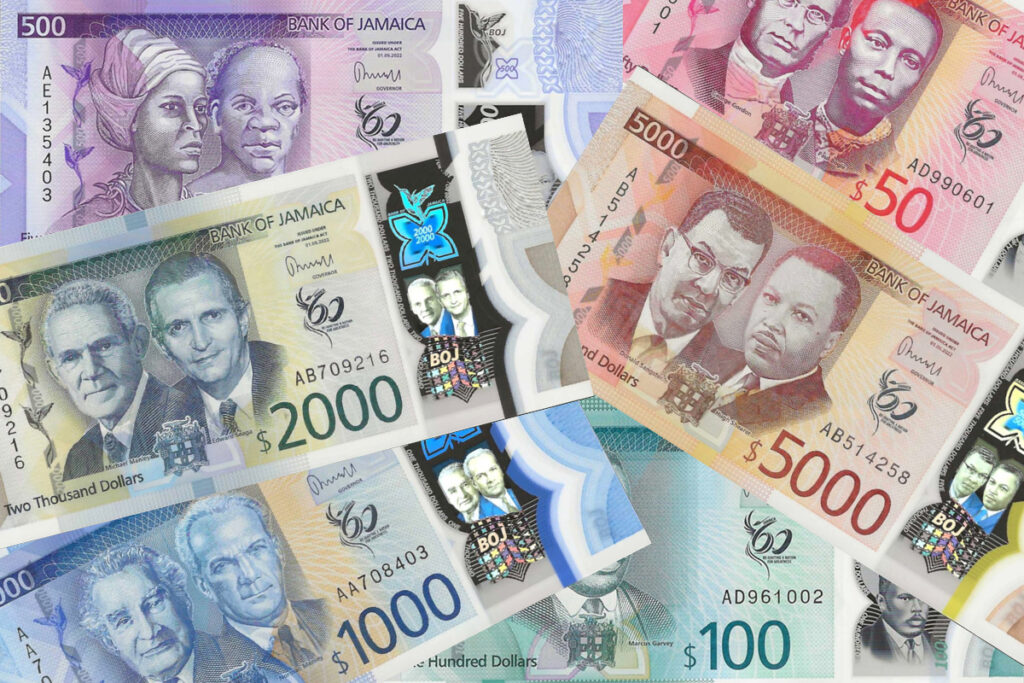
Traveling to a new country can be exciting, but one thing that often trips up visitors is figuring out the local money. Jamaican currency comes in colorful notes and coins, each with its own unique design and historical significance.
I’ve traveled enough to know how overwhelming it can feel. So, this guide on Jamaican money will help you quickly recognize the bills and coins, understand their value, and avoid awkward moments with the currency before you even land.
The Jamaican Dollar Explained
The official currency of Jamaica is the Jamaican dollar, represented by the currency code JMD and the currency symbol J$.
Locally in Jamaica, people simply say “dollars,” so when a price is quoted as “$200” or “$1,000,” it refers to Jamaican dollars rather than U.S. dollars. This can be confusing for first-time visitors, as U.S. dollars are sometimes accepted in tourist areas.
The Jamaican dollar is available in 10 denominations, including four coins and six banknotes that you can read about in-depth in the denomination section.
Current Exchange Rates and Where to Check
As of August 2025, you’re looking at around 160 Jamaican dollars to 1 US dollar, with the rate fluctuating between 155-161 over the past year.
Before you start calculating in your head, remember that the rate you see on Google isn’t what you’ll actually get. Banks, cambios, and hotels all take their cut (usually 2-5%).
It’s like buying concert tickets, there’s always that “convenience fee” nobody warned you about.
For real-time rates, check:
- XE.com – My personal favorite
- Wise.com – Great for international transfers
- OANDA – Reliable and accurate
What Jamaican Money Looks Like: A Guide to Notes and Coins
Jamaican money is both colorful and practical, but if it’s your first time on the island, it might take a little getting used to. I know the feeling, whenever I travel, it always takes me a moment to get comfortable with a new country’s coins and notes.
Jamaican Bank Notes
Jamaica’s banknotes come in six denominations, and have bright, distinctive colors, making them easy to tell apart. These notes are what you’ll use for most everyday spending,

- $50 Dollar Bill
- Color: Red polymer note
- Front: Paul Bogle and George William Gordon, freedom fighters
- Back: Doctor’s Cave Beach in Montego Bay
- Usage: Often the smallest note you’ll get as change in shops
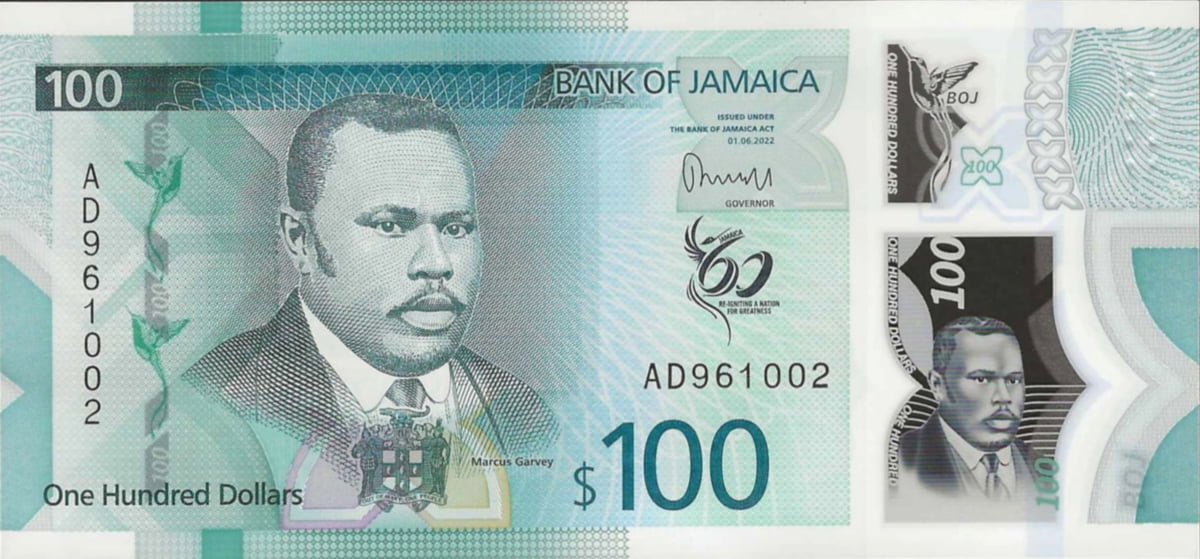
- $100 Dollar Bill
- Color: Green polymer note
- Front: Marcus Garvey, national hero and Pan-Africanist
- Back: Man and woman at Dunn’s River Falls
- Usage: Commonly used for small purchases like snacks
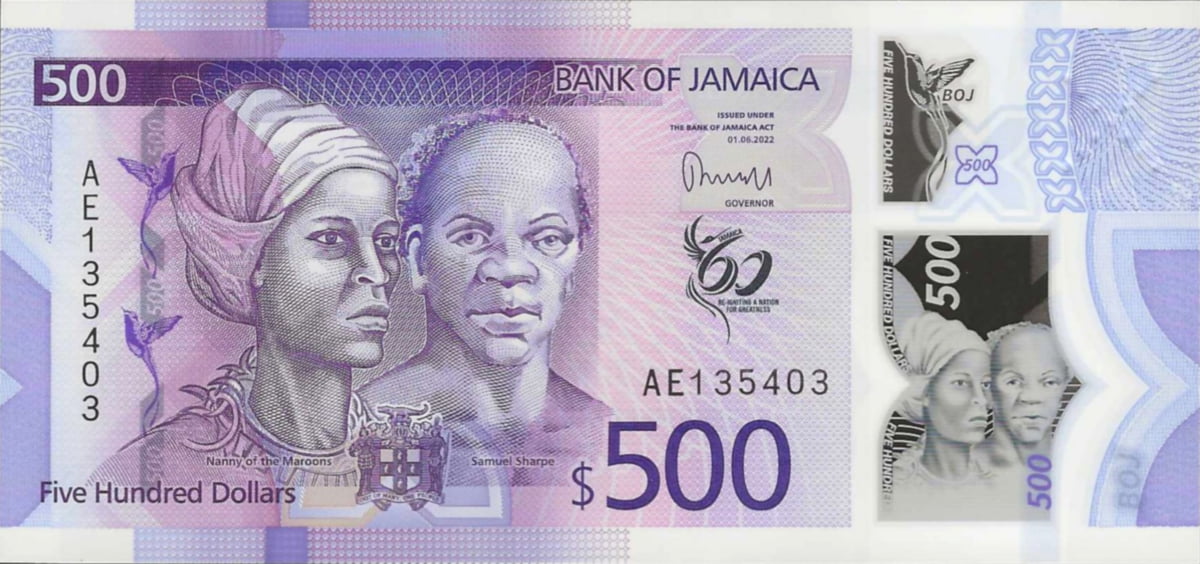
- $500 Dollar Bill
- Color: Purple polymer note
- Front: Nanny of the Maroons and Samuel Sharpe, freedom fighters
- Back: Map of Jamaica and Port Royal buildings
- Usage: Frequently used for small meals, patties, or street food
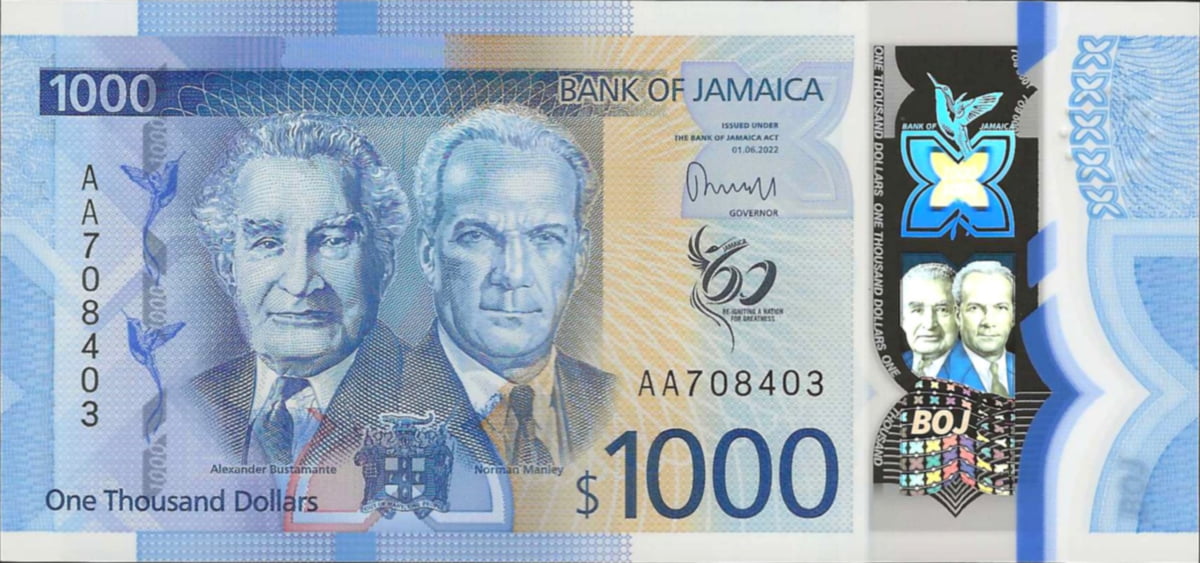
- $1,000 Dollar Bill
- Color: Blue polymer note
- Front: Alexander Bustamante and Norman Manley, founding fathers of modern Jamaica
- Back: Jamaica House and trees on Hope Road, Kingston
- Usage: Often used for lunch or larger meals
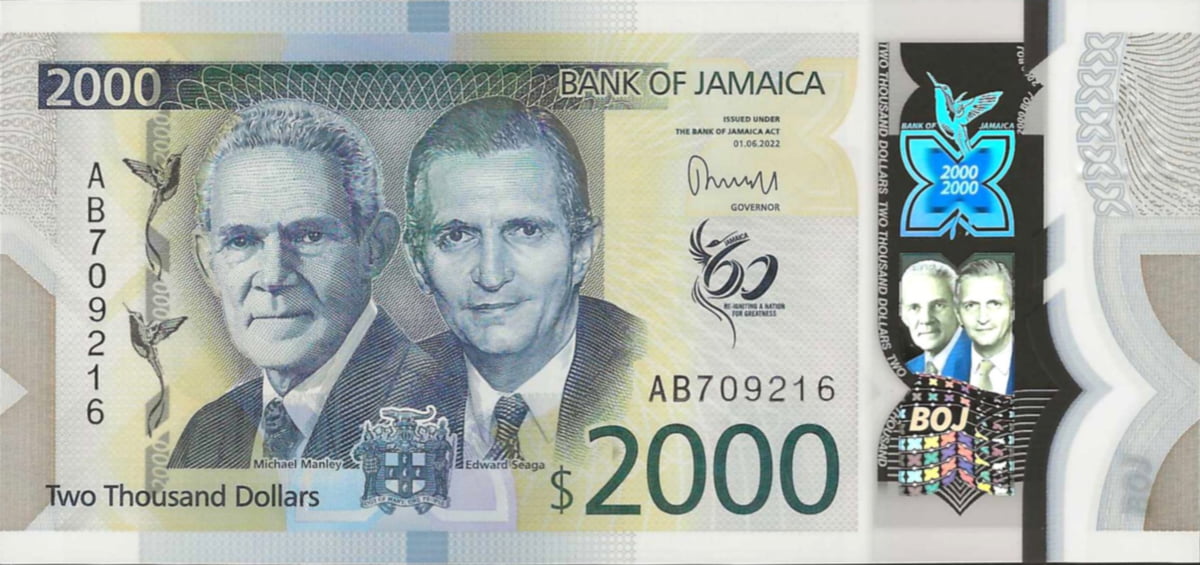
- $2,000 Dollar Bill
- Color: Yellow polymer note
- Front: Michael Manley and Edward Seaga, former prime ministers
- Back: 11 children from Central Branch Primary School, Kingston
- Usage: Used for bigger spending or paying bills

- $5,000 Dollar Bill
- Color: Orange polymer note
- Front: Donald Sangster and Hugh Shearer, former prime ministers
- Back: P.J. Patterson Highway (Highway 2000)
- Usage: Used for larger transactions or banking
Jamaican Coins
While coins are still used in Jamaica, the smallest amounts are often nearly worthless for everyday purchases, so don’t expect to pay much with them.

- $1 Dollar Coin
- Color: silver
- Front: Sir Alexander Bustamante, National Hero

- $5 Dollar Coin
- Color: silver
- Front: Norman Manley, National Hero
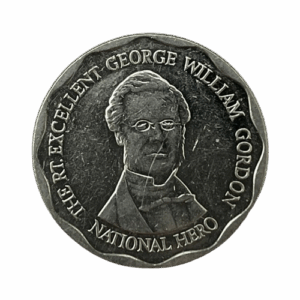
- $10 Dollar Coin
- Color: silver
- Front: George William Gordon, National Hero

- $20 Dollar Coin
- Color: Bi-metallic (copper center, nickel outer ring)
- Front: Marcus Garvey, National Hero
The Polymer Notes Transition
Jamaica fully switched to polymer banknotes in 2023, replacing the old paper bills. As of July 1, 2025, all old paper-based banknotes are no longer legal tender. Only polymer notes are valid for spending.
For travelers, here’s what to know:
- Easy to Spot – Polymer bills feel smooth and slightly plastic-like. They hold up well against Jamaica’s heat and humidity, so no more soggy bills after a beach day!
- Extra Secure – Look for see-through windows, raised textures, and color-shifting ink — built-in features that help prevent counterfeiting.
- Traveler Tip – ATMs and exchange counters now give only polymer notes, so you’ll always have the modern, recognized bills in your wallet.
How to Tell if Jamaican Money is Real
For tourists, spotting counterfeit notes can feel intimidating, but Jamaica’s polymer banknotes are designed to be tough to fake. With a few simple checks, you can feel confident your money is genuine.
Quick Tips for Travelers:
- Look for Transparent Windows: Polymer notes include clear see-through sections with embossed designs.
- Check Raised Features: Feel the note; portraits, numbers, and logos have a raised texture you can detect with your fingers.
- Color-Shifting Ink: Tilt the note and watch for colors that shift on certain elements (like the numbers).
- Durability Test (Optional) – Polymer bills resist tearing, water, and humidity, unlike paper notes.
Official Bank of Jamaica Counterfeit Guide

The flyer below highlights key security features. For a full, detailed breakdown, check the Bank of Jamaica’s official guide.
Where and How to Get Your Jamaican Dollars
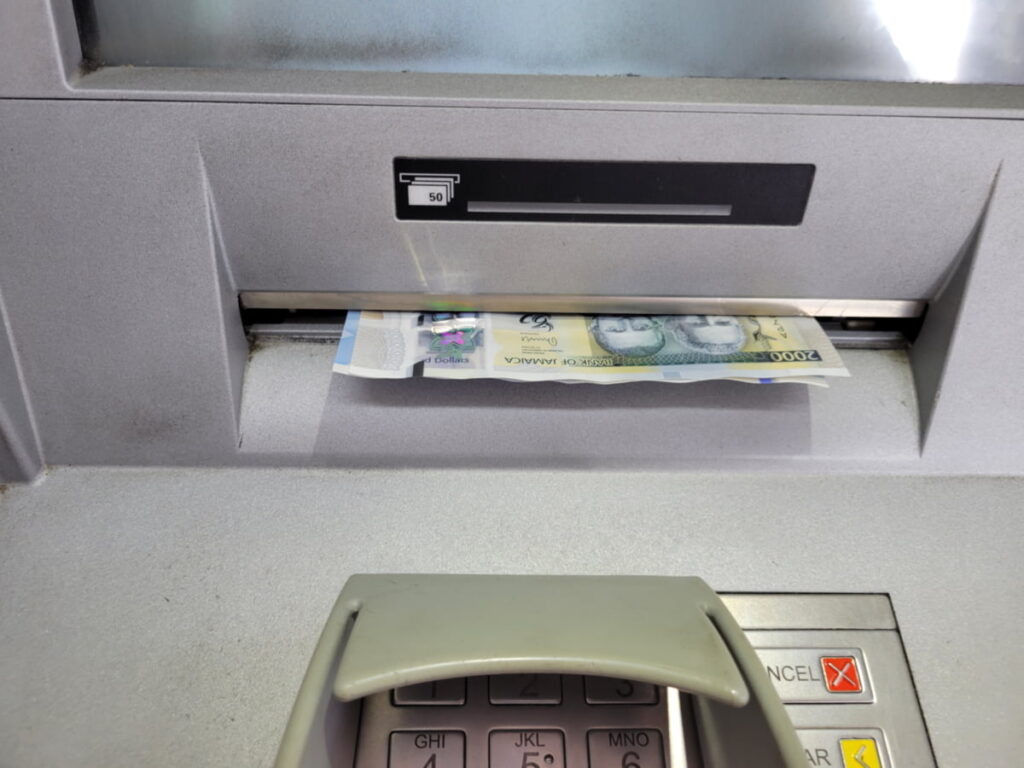
The Jamaican dollar is easy to access once you arrive, but knowing where to exchange and withdraw can save you both money and hassle.
ATMs (Cash Machines)
ATM’s are everywhere, and you should have no problems finding one in Kingston, Montego Bay, Negril, or Ocho Rios. You might have to travel a bit if you are in the more rural parts.
The Good:
- Available 24/7 in most tourist areas
- Accept international cards (look for Visa/Mastercard logos)
- Usually dispense crisp new bills
The Not-So-Good:
- Your bank at home will charge international fees (usually $3-5 USD)
- Local banks add their own fee (around J$300-500 per transaction)
- They can sometimes only give out large bills (J$5,000, great for the bank, terrible when you need smaller notes for street food, local markets, or tipping your driver and guides.
Currency Exchange: Where to Get the Best Deals
- Cambios (Licensed Exchange Bureaus): The best place for fair rates. Look for the Bank of Jamaica license on display. They usually beat hotels and airports, accept major currencies, and I’ve found FX Trader often gives the best rates.
- Banks NCB, Scotiabank, JN Bank, and Sagicor will exchange your foreign cash, but here’s what nobody warns you about: bank lines in Jamaica move on “island time.” Bring a book, download a podcast, or prepare to people-watch for a while. The rates are reliable, but patience is definitely required.
- Hotels and Airports Convenient? Yes. Good rates? Not really. Fine for getting a small amount to start, but don’t change your whole vacation budget here unless you enjoy paying extra fees.
- Street Money Changers Just don’t. I know they promise better rates, but the risk isn’t worth the few extra dollars you might save. Stick to official places unless you enjoy gambling with your vacation money.
Exchange Tip for Non-USD Currencies: Major currencies like EUR, CAD, and GBP are widely accepted at cambios and banks, but rates may be slightly less favorable than USD. Check with FX Trader or Scotiabank for specific rates before exchanging large amounts.
How to Actually Pay for Things in Jamaica
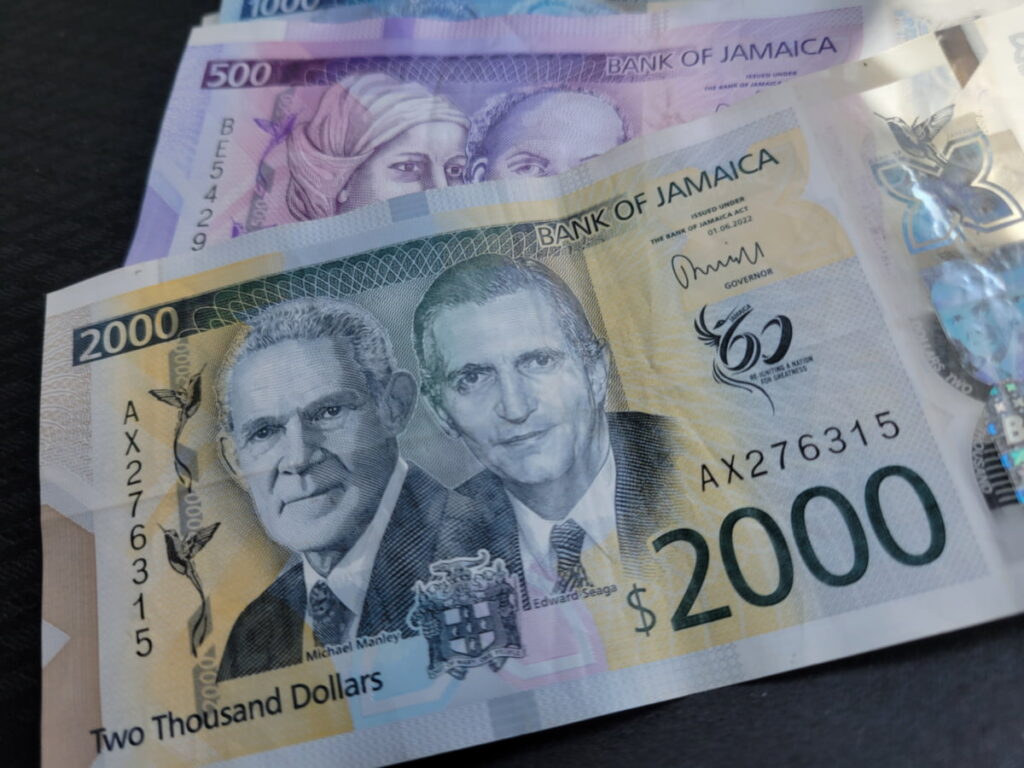
Cash is Still King (And How Locals Handle It)
Despite what your contactless payment lifestyle back home might suggest, Jamaica still runs on cash for a lot of daily transactions.
Knowing how much money you’ll need for Jamaica is crucial, as having enough cash on hand for taxis, street food, and local markets is essential.
Credit and Debit Cards: Where They Work
Cards are widely accepted at larger establishments, but there are important details to know. For a complete breakdown of fees, acceptance rates, and safety precautions, our guide to using credit & debit cards in Jamaica covers everything you need to be aware of.
Card tips:
- Visa and Mastercard are everywhere; American Express and Discover are picky about where they work
- Tell your bank you’re traveling – nothing kills vacation vibes like a blocked card
- Consider travel cards like Wise or Revolut to avoid foreign transaction fees
- Always have backup cash because machines sometimes decide to take unexpected breaks
- Keep your card in sight when paying at gas stations or small shops to avoid skimming risks.
Payment Options: Chip-and-PIN and contactless (“tap”) are common in urban/tourist areas. Some older machines may require a swipe.
Using U.S. Dollars in Jamaica
U.S. dollars are accepted throughout Jamaica, particularly in tourist areas, hotels, and resorts. However, outside these spaces, you’ll often need Jamaican dollars, and paying in USD can sometimes mean a less favorable exchange rate.
Examples:
- If you pay $10 USD for a J$1,200 meal (at 160 JMD/USD), you might get J$400 back, losing value due to the vendor’s rounded rate.
- At a souvenir shop, a J$800 item might cost $5 USD, but paying in JMD ensures you’re not overpaying.
Tip: Always carry a mix of small and large Jamaican dollar notes; taxis, street vendors, and rural shops may not have change for big bills like J$5,000.
Digital Payments in Jamaica
Digital wallets such as Apple Pay and Google Wallet are slowly being introduced by Jamaican banks, but acceptance remains inconsistent.
Some merchants were excited, but remained cautious due to fraud and liability concerns ,with some even suspending digital wallet use altogether until clearer guidelines are established.
Jamaica also has its own mobile wallet, Lynk, though it’s limited to locals with Jamaican bank accounts. Popular apps like PayPal, Cash App, and Venmo don’t work for everyday payments on the island.
The “Leftover Money Dilemma” (And Why Our Bills Make Great Souvenirs)
Here’s a travel secret that guidebooks don’t always mention: Jamaican dollars are nearly impossible to exchange once you leave Jamaica. This is an important factor when planning the total cost of your trip to Jamaica, as you’ll want to avoid taking out too much cash near the end of your stay.
Your best options for leftover JMD:
- Airport shopping spree: Spend it before you fly, rum, Blue Mountain coffee, or patties for the plane ride
- Tip generously: Leave extra for hotel staff who went the extra mile (this is genuinely appreciated)
- Souvenir strategy: Keep one or two of our colorful polymer notes, they make conversation starters and are way more interesting than postcards
Final Thoughts from Your Jamaican Friend
Look, dealing with money shouldn’t stress you out when you’re here to enjoy our beautiful island. Yes, it might seem complicated at first – the new polymer notes, the exchange rates, figuring out when to use cash versus cards – but you’ll get the hang of it quickly.
The most important thing? Don’t let money worries overshadow your experience. This guide gives you the currency specifics, but for a wider view on managing your vacation funds, explore our complete money and budgeting hub for Jamaica.
Enjoy your stay, and welcome to Jamaica!